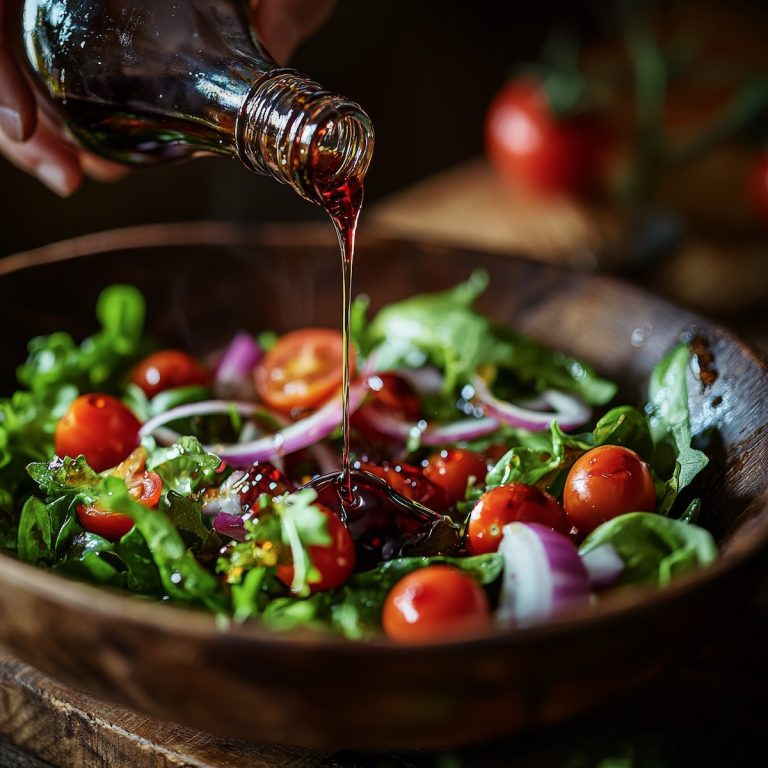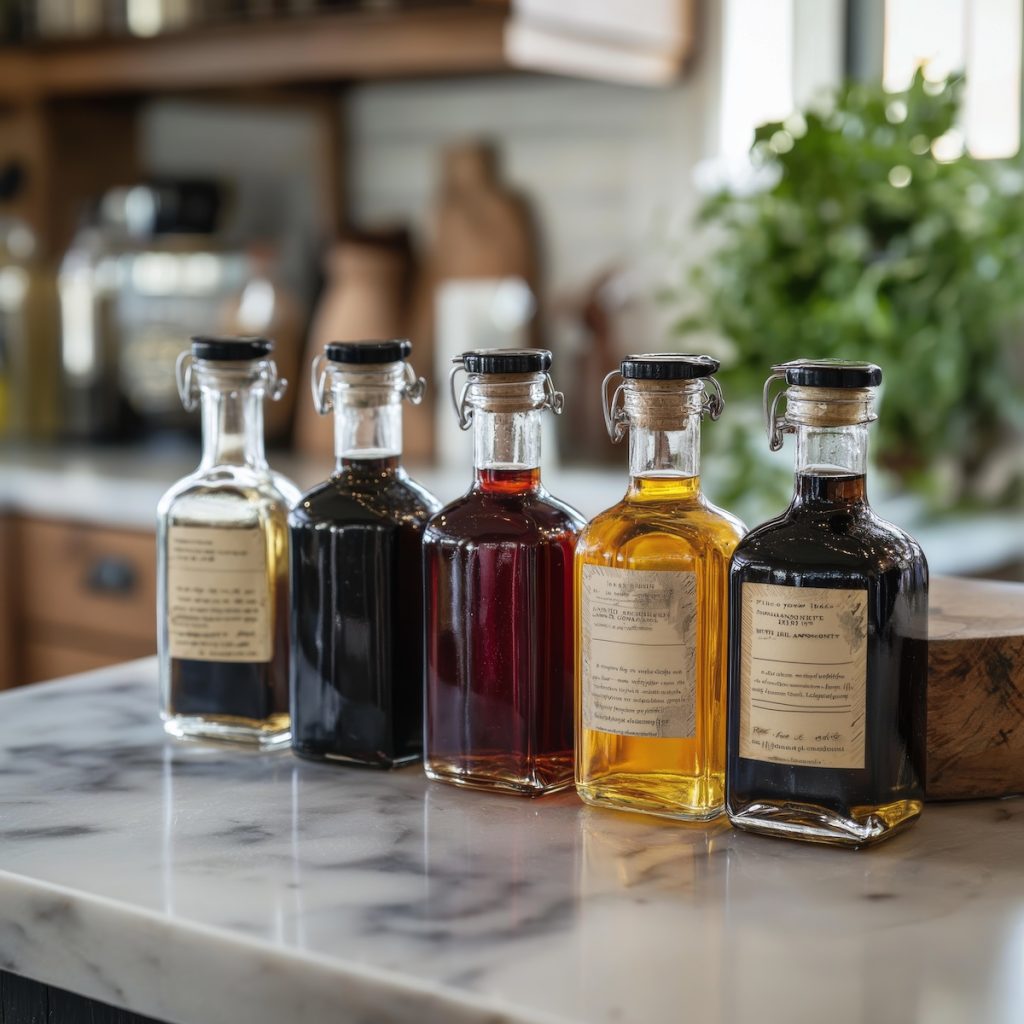Why Every Kitchen Needs Vinegar: Tips, Tricks, and Unexpected Uses
Vinegar might be the most underestimated hero in your kitchen—and possibly your cleaning cabinet. This ancient sour star has been around for thousands of years, showing up in Egyptian urns, Roman recipes, and even as battlefield medicine.
Yes, vinegar was basically the Swiss Army knife of antiquity. Fast forward to today, and it’s still pulling its weight in more ways than you’d expect.
From the mellow sweetness of balsamic to the puckering punch of white distilled, vinegar comes in a variety of styles, each with its own flair. Apple cider vinegar’s trendy with health claims, while rice vinegar quietly elevates your stir-fries without demanding attention. Red wine vinegar? The life of the salad party.
But vinegar isn’t just for dressing greens—it tenderizes meat, brightens sauces, pickles practically anything, and moonlights as a natural cleaner. Some folks even dab it behind their ears for freshness, but we’re not officially endorsing that (unless you’re into eau de vinaigre).
In this post, we’ll explore vinegar’s surprisingly juicy history, explore its many varieties, and uncover all the ways it can make your cooking, cleaning, and maybe even your life a little zestier. Get ready to pucker up—this is going to be fun.
Vinegars and Culinary Uses
| Vinegar Type | Culinary Uses |
|---|---|
| Balsamic Vinegar | Drizzle over salads, roasted vegetables, strawberries, aged cheeses, or use in glazes and reductions |
| Apple Cider Vinegar | Marinades for pork or chicken, vinaigrettes, barbecue sauces, slaws, chutneys |
| White Distilled Vinegar | Pickling, tangy barbecue sauces, cleaning produce, baking (acid for leavening) |
| Red Wine Vinegar | Salad dressings, reductions, braises, tomato-based sauces, marinades for red meat |
| White Wine Vinegar | Light vinaigrettes, pan sauces for fish or chicken, deglazing, hollandaise |
| Rice Vinegar | Sushi rice, stir-fries, dipping sauces, Asian slaws, pickled ginger |
| Malt Vinegar | Classic fish and chips, pickled onions or eggs, tangy marinades for beef or game |
| Coconut Vinegar | Southeast Asian dishes, Filipino adobo, tropical marinades, sauces with tamarind or citrus |
| Sherry Vinegar | Gazpacho, Spanish stews, salad dressings, roasted vegetables, lentils |
| Champagne Vinegar | Delicate vinaigrettes, light seafood dishes, fruit salads, creamy sauces |
| Cane Vinegar | Filipino dishes (e.g., adobo), tropical fruit salsas, marinades, dipping sauces |
| Date Vinegar | Middle Eastern cuisine, tagines, glazes for lamb, sauces with dried fruits or nuts |

Five Professional Chef Tips for Cooking with Vinegar
1. Brightening a Dull Soup or Sauce
When a dish tastes flat, chefs often add a few drops of vinegar, especially white wine or sherry vinegar, instead of more salt. The acidity sharpens flavors and gives the dish a fresh lift, like squeezing lemons without adding citrus flavor.
2. Tenderizing Proteins in Marinades
Chefs use vinegar for flavor and to break down tough meat fibers. A quick marinade with a splash of vinegar (like apple cider or red wine) helps tenderize meats like skirt steak or pork shoulder—just don’t let it sit too long, or it can make them mushy.
3. Cleaning and Setting Color in Vegetables
A dash of vinegar in boiling water helps keep bright vegetables (like green beans or red cabbage) vibrant. The acid sets the chlorophyll or anthocyanins so they don’t turn gray or muddy during cooking.
4. Poaching Eggs Like a Pro
Adding a tablespoon of vinegar to simmering water helps egg whites firm up faster when poaching. This keeps them from fraying into watery threads and helps create that perfect poached shape.
5. Balancing Sweets in Baking
Chefs sneak vinegar into desserts to balance sweetness and enhance complexity. A bit of balsamic in berry compote, or white vinegar in pie crust (for flakiness!), works wonders without tasting like vinegar.
Six Very Popular Vinegars
Apple Cider Vinegar
Apple cider vinegar brings a fruity tang and a punch of acidity to your cooking and wellness routine. Made by fermenting apple juice into hard cider, then into vinegar, it delivers a sharp, crisp flavor with just a hint of sweetness.
Cooks reach for it when whipping up vinaigrettes, brightening up slaws, or adding depth to barbecue sauces. It tenderizes meats, balances sweetness in chutneys, and brings zing to marinades.
Beyond the kitchen, apple cider vinegar enjoys a reputation for home remedies and natural cleaning. Some folks even drink it diluted for its supposed health benefits—but be warned, it’s not exactly apple juice.
With its golden hue and bold personality, this vinegar doesn’t hide in the background. It steps up, stands out, and gets the job done. Whether you’re cooking, cleaning, or experimenting with a home tonic, apple cider vinegar proves it’s more than just sour apples.
Balsamic Vinegar
Balsamic vinegar brings a rich, complex flavor to the table that no other vinegar can match. Made from freshly crushed grape must and aged in wooden barrels, it hails from Modena and Reggio Emilia, Italy, where artisans have perfected the craft for centuries. Its deep, syrupy sweetness pairs beautifully with savory and sweet dishes alike.
Cooks drizzle balsamic over caprese salads, roasted vegetables, grilled meats, and even strawberries or vanilla ice cream. It thickens into a glossy reduction that elevates everything from bruschetta to seared steak. A few drops can transform a simple dish into something elegant.
This vinegar doesn’t just season—it seduces. Its balance of sweet and tart adds sophistication without effort. Whether you’re finishing a dish or crafting a glaze, balsamic vinegar steps in with style and substance. It’s not just a pantry staple—it’s a bottle of edible history with a flair for the dramatic.
Champagne Vinegar
Champagne vinegar adds a delicate, refined touch to dishes that call for subtle acidity. Made from fermented champagne or sparkling wine, this vinegar boasts a light, crisp flavor with floral notes and a gentle tang. It doesn’t shout; it whispers sophistication.
Cooks use it to craft elegant vinaigrettes, brighten seafood dishes, or balance the richness of creamy sauces. It shines in recipes where other vinegars might overpower butter-based sauces, light pickles, or fruit-forward salads. A splash in a pan sauce adds complexity without stealing the spotlight.
This vinegar is especially well-suited to herbs, citrus, and mild greens like butter lettuce or arugula. Its pale color and delicate taste make it a favorite among chefs who want to enhance without overwhelming.
Whether finishing a light dish or fine-tuning a marinade, Champagne vinegar delivers finesse. It proves that sometimes, the gentlest ingredient makes the boldest impression.
Red Wine Vinegar
Red wine vinegar adds bold, tangy depth to a wide range of dishes. Made by fermenting red wine, it carries the fruity richness of grapes and a sharp acidity that wakes your taste buds.
Cooks reach for it when building vinaigrettes, marinating meats, or deglazing pans for robust sauces. Its strong flavor pairs perfectly with hearty ingredients like lentils, roasted vegetables, beef, and dark leafy greens.
A splash in a tomato sauce or stew can brighten and balance richness without overpowering the dish. It also enhances Mediterranean recipes—from Greek salads to French reductions.
Red wine vinegar doesn’t shy away from the spotlight. It stands tall in bold recipes and holds its own with strong flavors like garlic, shallots, and mustard. Whether you’re crafting a rustic dressing or sharpening a soup, red wine vinegar delivers complexity with confidence. It’s a bold bottle that earns its space in every kitchen.
Rice Wine Vinegar
Rice vinegar brings a mild, slightly sweet tang that complements delicate flavors without overwhelming them. Made from fermented rice, it’s a staple in Asian cuisines—especially Chinese, Japanese, Korean, and Vietnamese dishes. Its low acidity makes it smoother and more approachable than many Western vinegars.
Cooks use rice vinegar to season sushi rice, balance stir-fry sauces, and add zip to dipping sauces, slaws, and pickled vegetables. It blends beautifully with soy sauce, sesame oil, and ginger, creating the backbone of countless Asian-inspired dressings and marinades.
Because of its gentle nature, rice vinegar works especially well in dishes where you want brightness without bite. It lifts flavors, enhances umami, and brings harmony to sweet, salty, and savory components.
Whether you’re making sushi, a cucumber salad, or a quick pickle, rice vinegar delivers balance with grace. It’s proof that sometimes, subtlety is the secret to great flavor.
White Wine Vinegar
White wine vinegar offers a bright, clean acidity that lifts flavors without taking over the dish. Made by fermenting white wine, it strikes a perfect balance between sharpness and subtle fruitiness. Its versatility makes it a go-to ingredient in both classic European cuisine and everyday home cooking.
Cooks reach for white wine vinegar when crafting vinaigrettes, pan sauces, and delicate reductions. It deglazes pans beautifully and adds just the right tang to light sauces, especially for poultry, fish, and vegetables. You’ll find it enhancing everything from beurre blanc to poached eggs.
Its pale color and crisp taste make it ideal when you want acidity without darkening a dish or introducing sweetness. Pair it with fresh herbs, garlic, or citrus for maximum effect.
White wine vinegar may not seek attention, but it delivers quiet brilliance. It’s the kind of kitchen staple that proves essential the moment it’s missing.
Vinegars, Place of Origin and Flavor Profiles
| Vinegar Type | Origin | Flavor Profile |
|---|---|---|
| Balsamic Vinegar | Italy (Modena, Reggio) | Sweet, rich, syrupy, slightly tangy |
| Apple Cider Vinegar | Likely Europe/US | Fruity, sharp, mildly sweet |
| White Distilled Vinegar | USA / Industrial origin | Very sharp, clean, acidic |
| Red Wine Vinegar | Mediterranean region | Bold, tangy, slightly fruity |
| White Wine Vinegar | France, Mediterranean | Light, crisp, slightly fruity |
| Rice Vinegar | China, Japan | Mild, slightly sweet, low acidity |
| Malt Vinegar | United Kingdom | Malty, robust, slightly yeasty |
| Coconut Vinegar | Southeast Asia | Mildly sweet, slightly nutty, tangy |
| Sherry Vinegar | Spain (Jerez region) | Nutty, complex, slightly sweet and dry |
| Champagne Vinegar | France (Champagne region) | Delicate, floral, light and crisp |
| Cane Vinegar | Philippines | Mild, slightly sweet, with a mellow acidity |
| Date Vinegar | Middle East (Babylonia) | Sweet, fruity, slightly caramel-like |

A Little History
Humans stumbled upon vinegar by happy accident—most likely when someone left wine out too long and nature turned it sour. Historians believe vinegar’s origins date back over 7,000 years to ancient Babylon, where people used it as both a preservative and a flavoring agent.
The Babylonians made it from dates, while the Egyptians crafted theirs from fermented grains and fruits. Vinegar’s creation didn’t require complex tools—just time, natural fermentation, and a bit of forgetfulness.
As trade routes expanded, so did vinegar’s reach. The Greeks and Romans embraced it enthusiastically.
Roman soldiers diluted it with water to create a thirst-quenching drink called posca, while cooks and medics appreciated its versatility. The Chinese began brewing rice vinegar early on, developing regional styles that still thrive today.
In medieval Europe, vinegar took on a new life as both medicine and disinfectant. Apothecaries used it to treat wounds and ward off plagues, and households relied on it to preserve food before refrigeration existed.
Over the centuries, every culture put its spin on vinegar, producing varieties from whatever fermented materials were available—grapes, apples, honey, rice, even coconut sap.
From a lucky mistake to a global staple, vinegar earned its spot in kitchens and cultures worldwide.




